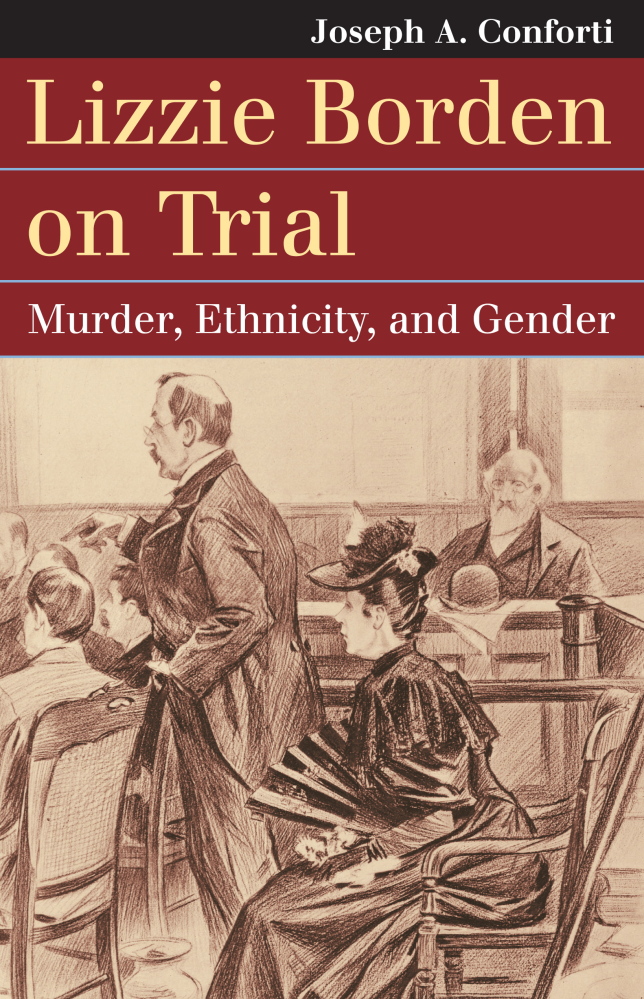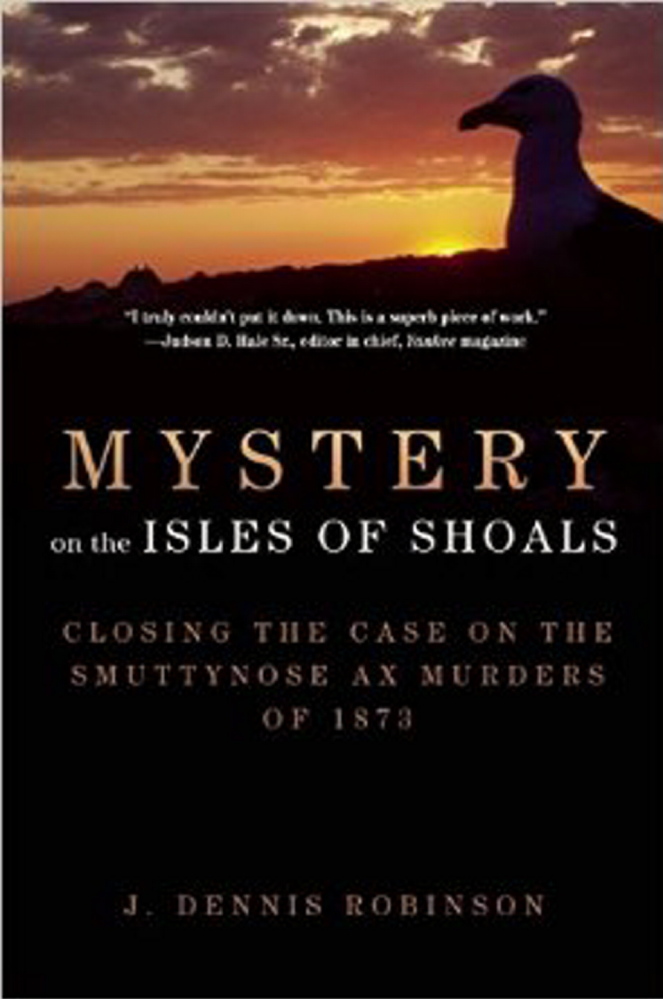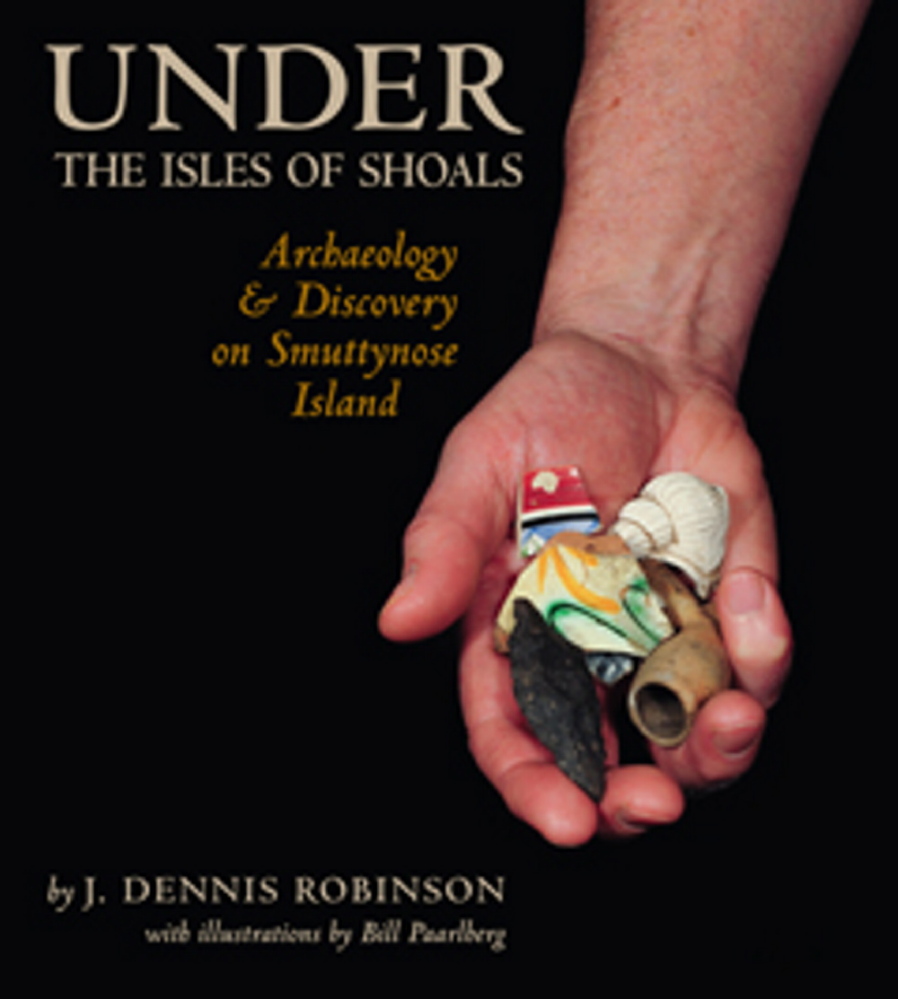Murder most foul! Murder most famous! New England has certainly had its share of ghastly homicides. Regional historical organizations have an abundance of execution broadsides and fading pamphlets charting nasty crimes, but most are long forgotten along with the victims and killers. No matter how egregious, few crimes have become legend.
Now two veteran regional historians, J. Dennis Robinson and Professor Joseph A. Conforti, each thoughtfully examines the trials over the most infamous New England ax murders of the late 19th century.
In “Mystery On The Isles Of Shoals: Closing The Case On The Smuttynose Ax Murders Of 1873,” Robinson unravels the trial of Louis Wagner (c. 1845-1875) for the murder of Karen and Anethe Christensen on Maine’s Smuttynose Island on March 6, 1783.
In “Lizzie Borden On Trial: Murder, Ethnicity, And Gender,” Conforti follows the intricacies of Elizabeth “Lizzie” Borden (1860-1927) for the alleged slaying of her father and stepmother, Andrew and Abby, at Fall River, Massachusetts, on Aug. 4, 1892.
Though unrelated, the two butcheries, as the writers both neatly show, were not mere moments of madness or bloodlust, quickly dismissed as someone’s insanity or greed. Both were bellwethers in social, economic, ethnic, religious and journalistic development in a dynamic America. In spite of more heinous crimes forgotten now, both are remembered because their trials made history.
Robinson, journalist and author of “Under the Isles of Shoals: Archeology and Discovery on Smuttynose Island,” is also a steward of that Maine isle. The new book’s subtitle is clearly intended to suggest the book is definitive. Of course, fans of Anita Shreve’s popular novel “The Weight of Water” may not agree with Robinson’s conclusion.
However, Shreve was writing fiction. No matter how eloquent, her book is a work of imagination. Robinson is the latest and first true historian to follow Louis Wagner from the street life of Portsmouth to fishing and life on the Isles of Shoals, and on to the murder of the Christensens, his two escapes from arrest and his eventual execution at the Maine State Prison.
Robinson has scoured the trial documents and every scrap of evidence, providing careful notes, bibliography and a useful index. I will not spoil the book except to say that Wagner was painted a loafer and evil Prussian while the victims were seen as hard-working, innocent Norwegian Americans (which in fact they were). In spite of his antics and what seems a clear evidence trail, Wagner had a dream-team defense. Because the crime occurred on the Maine side of the Isles of Shoal, the trial was to take place in Alfred, but the defense had the venue changed to Portland. The press, and particularly noted poet Celia Thaxter (whose family ran a famous hotel on nearby Appledore Island and had employed the victims) with her on-the-spot essay in Atlantic Monthly, terrified Victorian America.
Conforti’s book is more concise and focuses on the trial of Lizzie Borden, who was acquitted of the ax murder of her father and stepmother. This is a scholarly book of the first order based on the trial evidence and every piece of relevant material. This reviewer would call “Lizzie Borden On Trial” the definitive word. Lizzie, however, has long since become a creature of myth, so her persona will continue to belong to conspiracy buffs.
By the 1890s, the immigrants-versus-Yankee situation was in crisis, especially in mill towns like Fall River. The Borden family had its name on virtually everything from banks to mills to the leading churches. Andrew Borden, was a prosperous (penny-pinching) businessman, who continued to live with his daughters in a section of town that had been abandoned by old-line groups to the Irish and Portuguese laboring families. Borden’s household was an unhappy powder keg, as the author so neatly shows. When the grand jury sent Lizzie up to be tried for murder, she became the target of the immigrant, anti-Protestant press, the falsely accused Sunday School Teacher, “A Protestant Nun” to all Yankeedom. How could “a lady” perform such a revolting crime? To the Labor and ethnic press, growing since the Civil War, she was a killer protected by women’s and Christians’ groups, as well as the white establishment.
The Borden dream team included former Massachusetts Gov. George D. Robinson (a crony of the presiding judge), Andrew J. Jennings, Melvin O. Adams and former Congressman Arthur S. Phillips. Ethnic, suffrage and religious differences were rarely so taut or clear-cut. In Fall River, the Irish-owned Globe carried headlines after the acquittal, claiming the “thing” that killed the Bordens was “still at large.” Then would come the anonymous rhyme “Forty Whacks,” which we all recited as kids. Though found not guilty in the courts, Lizzie, who died a well-to-do woman in 1927, was forever convicted in the court of public opinion. She became an American on a par with London’s Jack The Ripper. Public knowledge of events like the SmuttyNose murders, which had similar social relevance, faded a bit.
William David Barry is a local historian who has authored/co-authored seven books, including “Maine: The Wilder Side of New England” and “Deering: A Social and Architectural History.” He lives in Portland with his wife, Debra, and their cat, Nadine.
Send questions/comments to the editors.





Success. Please wait for the page to reload. If the page does not reload within 5 seconds, please refresh the page.
Enter your email and password to access comments.
Hi, to comment on stories you must . This profile is in addition to your subscription and website login.
Already have a commenting profile? .
Invalid username/password.
Please check your email to confirm and complete your registration.
Only subscribers are eligible to post comments. Please subscribe or login first for digital access. Here’s why.
Use the form below to reset your password. When you've submitted your account email, we will send an email with a reset code.